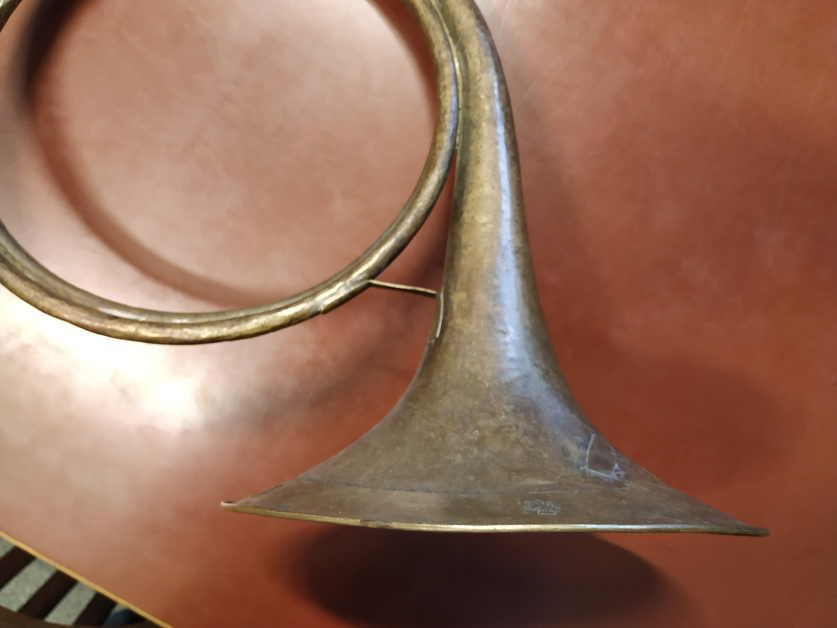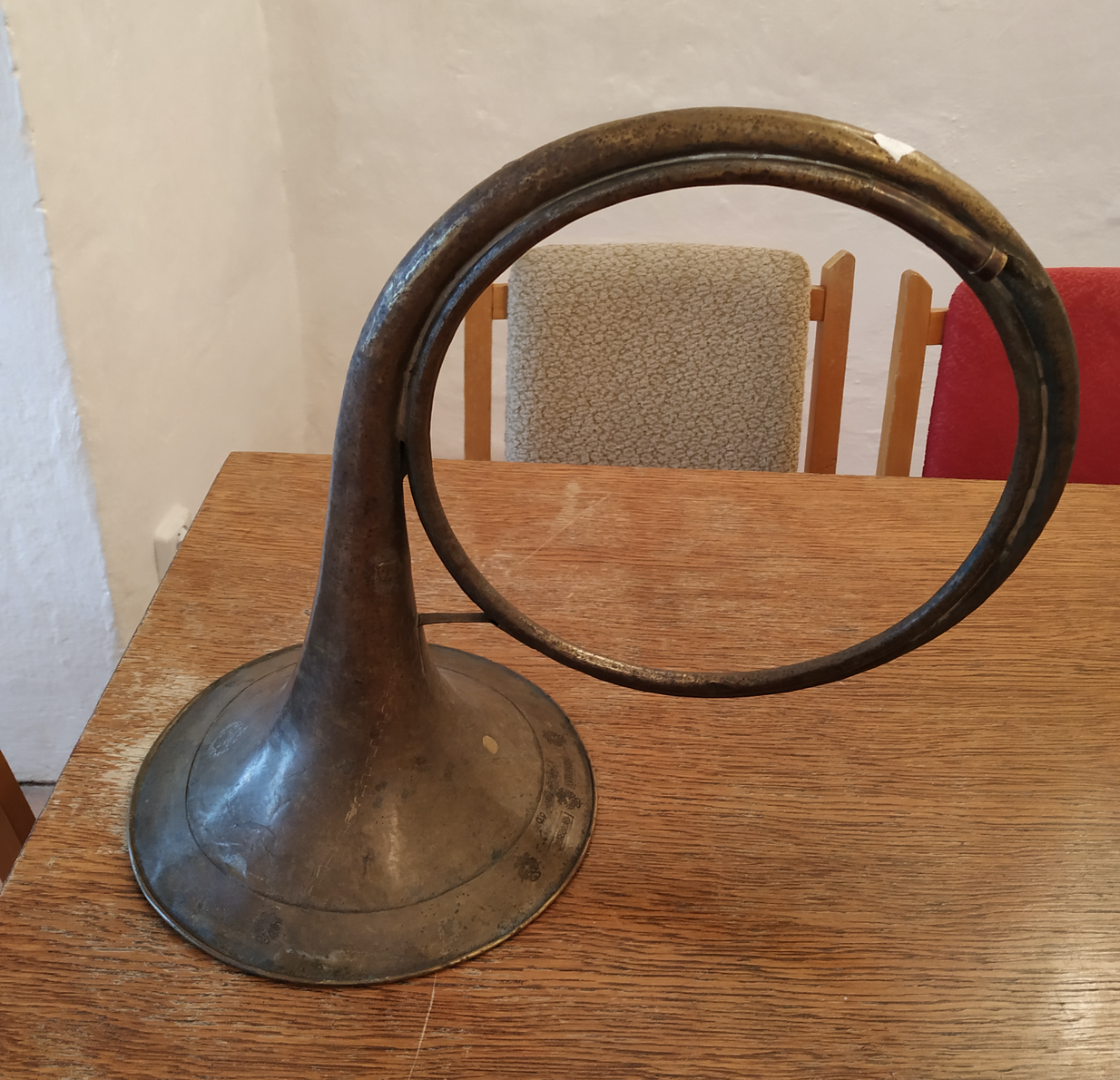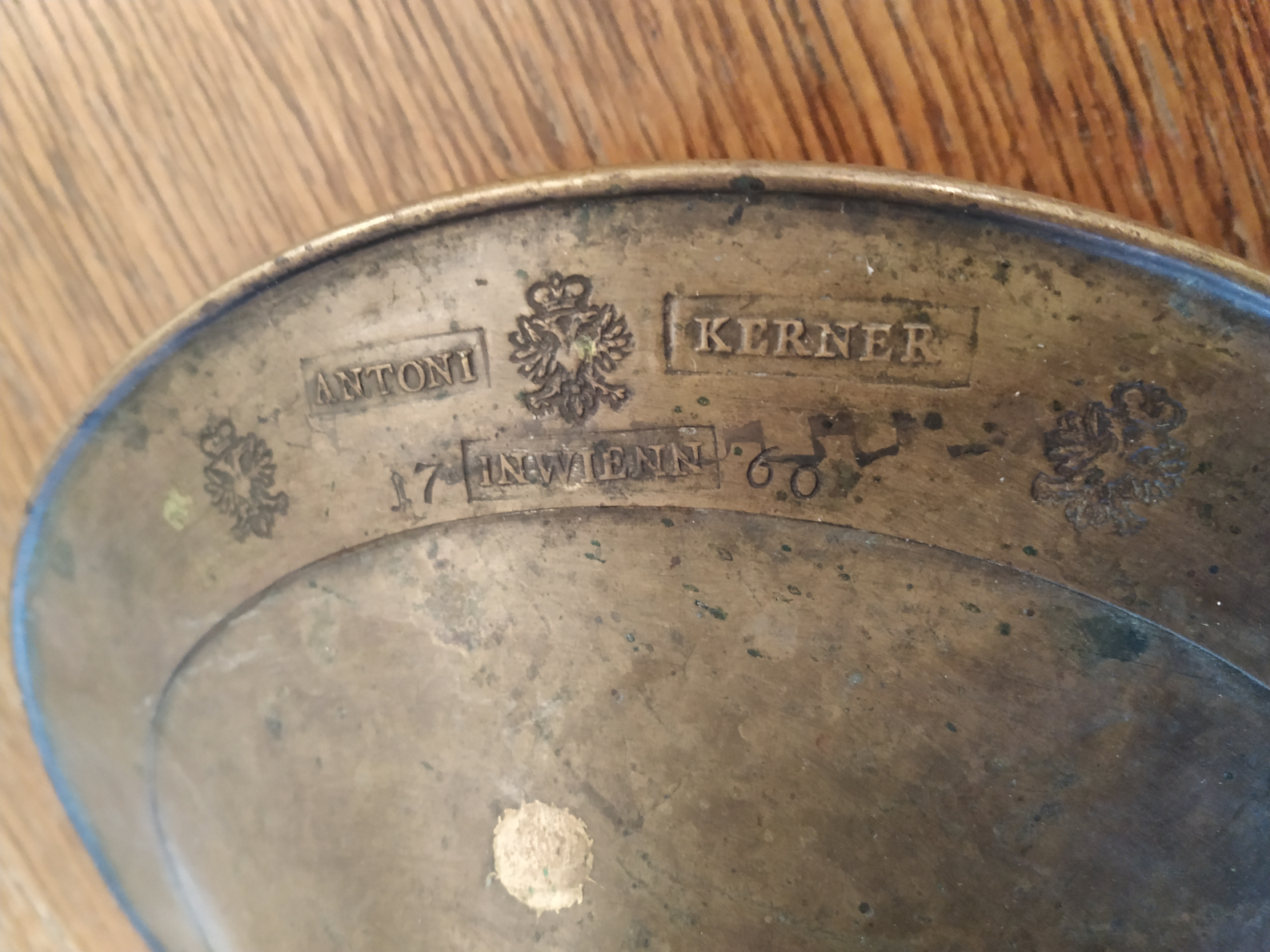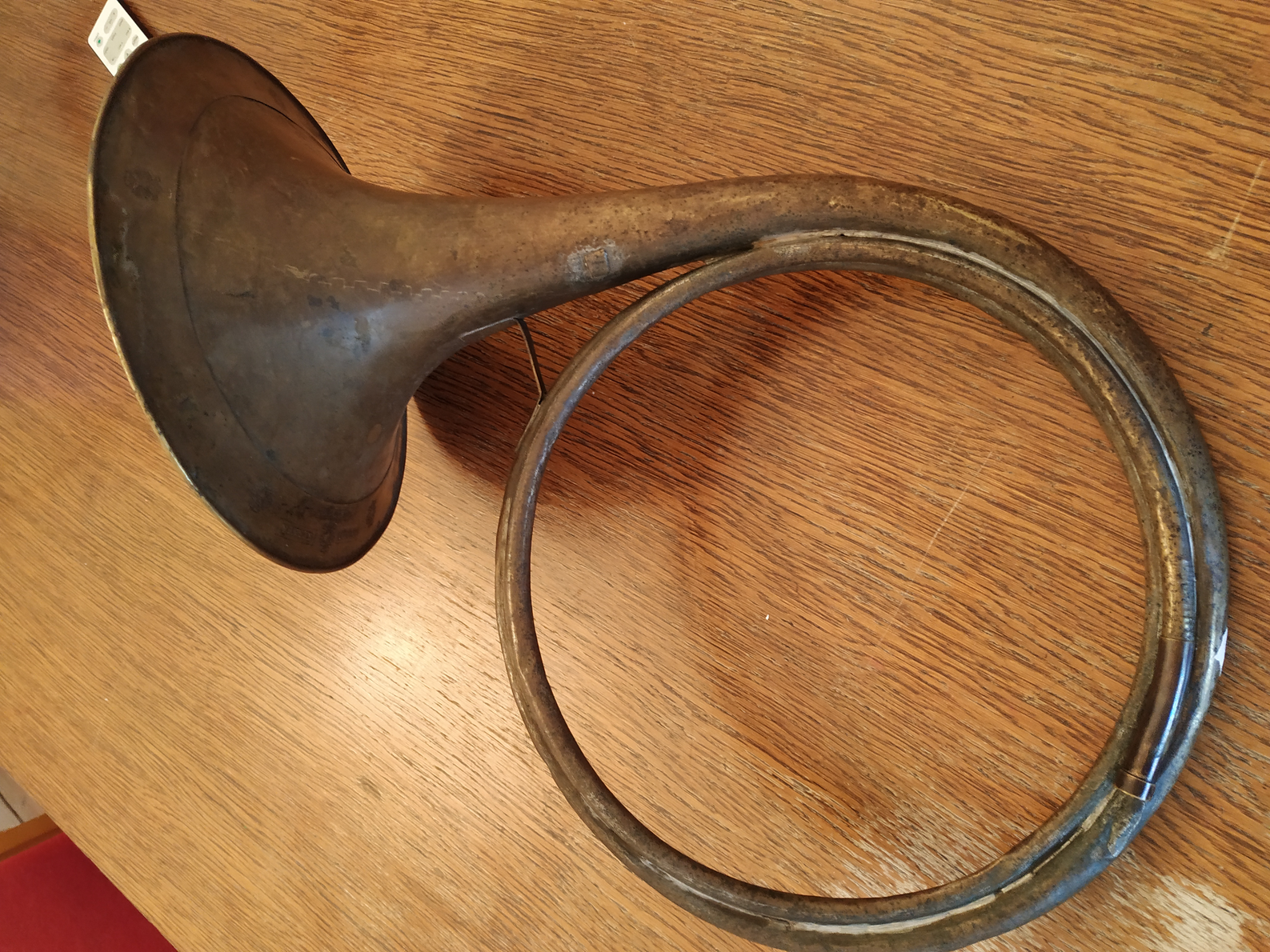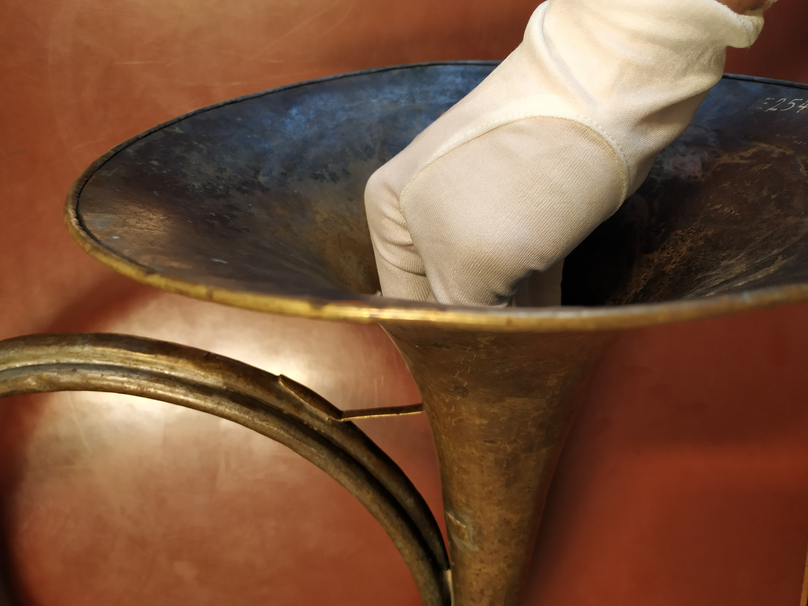The more I played the horn, the more I got used to it. Because of its clarity and precision, the horn was actually demanding more definition from the player. More attacks, more articulation, an active tongue and embouchure.
At the same time, the absence of any gap or difficult step between notes made it very comfortable to play a lyric legato (given that one gives stopped notes the work they need). This echoes one of the rare known facts about Leutgeb’s playing : after one of his performances at the Concert Spirituel in Paris in may 1770, one could read in an article in the Mercure de France :
“[…] his oustanding quality is to ‘sing’ the adagios as perfectly as the most mellow,
the most interesting, and the most accurate voice.1”
Historical sources and practical experimentation thus match here. A fluid, light and legato phrasing was one of Leutgeb’s specialities, and this is exactly what a player would get when playing the 1760 Kerner.
In terms of volume and presence, the horn could play respectably loud and soft, but its projection was its main particularity. This makes me think that even if it could play with a soft dynamic without any strain, it could still be easily audible in either a small or large ensemble.
The Kerner has more clarity than weight in the sound. Its lightness, easy-response , clear tonguing and agility, made me wonder about ornamentation, which was a very common thing to do during the course of the Classical period. This horn makes it quite easier and would explain its importance. There is a lot to learn from this for players.
Another consequence is that the naturally flat harmonics for which we usually need to open the bell completely (B flat, F sharp, A…) suddenly required less movement from the hand, because it is already so out of the bell. Their use was then not such a big deal at the time because they required less work on this horn ; I even suspect they would barely correct those notes by moving the hand at all. It now makes the opening of the fragment in E flat below (which I considered tricky) very easy.
I blew in it and it rang like a bell. Right from the first sound, it was obvious how free-blowing and easy to play it was ; it felt immediately responsive. Its vibration was very powerful. Every harmonic was very centered, easy to hit, in tune. The precision and clarity of the horn was astonishing. I think it would be very accurate to say that the horn sounded as it looked like.
As a result, the hand technique (read as : the possibilities of movement) was limited : one could only use a quick and small move of the wrist to close the bell. Fingers had to stay still. I have the habit to use all sorts of different hand moves and « fingerings » in larger French horn bells in order to get the best sounding stopped notes or to vary their colours : this was nearly impossible here. As a consequence, I could not rely on the hand as much and most of the work had to be done with my embouchure, tongue and air.
This could very well show that the horn was not meant for hand technique at first ; however, after a minute of adaptation, hand technique proved to be fluid and 100% operational, even in the difficult middle range, and definitely sounded charming (except for the third line B which somehow demands a lot of attention).
Picking up the horn, I was amazed by how light and small it is. The corpus is only 245 mm wide, and the pipes keep a very small diameter until the bell’s tail. As for the bell itself, the flare was only a tiny bit larger than my hand, and the throat very narrow. I was surprised by the thickness of the metal : I was genuinely expecting something thiner.
Thanks to Bart van Oort, Barbara Willi and Frantisek Maly, I had the privilege to go to the Jevisovice Castle to play the original 1760 Kerner (Inventory number 33.732, E254) of which Richard Seraphinoff is now making copies.
Click HERE to listen to the full recording of this horn (Mozart, fragment KV494a in E with string quartet).
The high range appeared to be very easy due to the small bore (as suspected when I tried the 1798 Haltenhof). Somehow it had the same intensity and colour than the middle range. This easiness certainly explains why so many horn works of the XVIIIth century are so high.
The horn sounds very bright and clear and general (as one could expect from reading the chapter about horn manufacture), and it is actually not easy to use different ton colours. One could at best get a richer and more intense sound, but always staying on the bright side. I was able to give the stopped sounds a sort of darker quality, but as I said before it had to come entirely from my embouchure and not from the hand. That gives us an idea of how hornists played at the time, probably using phrasing, articulation etc., more than different sounds.
For the record, there is a chance this horn was originally a horn in G with a fixed lead-pipe. According to the restoration report made by Stefan Katte2, the lead-pipe had been at some point cut off and the first hoop of the horn was probably removed. A socket was put in place to be able to add crooks on the horn. It is then not in a fully original state, but it illustrates this transitional period that was described in the historical part of my work. This also means that the horn probably wasn’t meant to be played with hand technique at first ; but the transformation it has been through reveals that players had different needs at a certain time, and my experimentation on it (which I am about to describe) show that hand technique is absolutely not a problem on this horn.
No crooks survived : I had to deal with a couple of baroque crooks I brought with me, and eventually recorded the horn with a crook from a Egger hand horn that Mr. Vaclav Luks kindly lent to me (I was only able to play in E-ish). This was of course far from being historically appropriate, there is probably no way to know the exact original sound of this horn ; but I did my best in the very short amount of time and organization I had. There is always a way one could do things better ! However, the experiment was still enlightening.
It was even brighter in the middle range, giving it a more dramatic incisive colour. Hence, this gives a new character to places in Mozart’s horn concertos such as :
Fast scale passages were all of a sudden incredibly easier, clear, without any struggle. This, combined to the easy open A note, made for instance this place in concerto #3 a lot more fluid and comfortable :
The easiness of this instrument also inhanced my trills, in particular the stopped trill on written B - A that always demanded much more attention to my taste on other horns. On the Kerner, it had more sound, was faster and easily regular, giving a new advantage for passages such as this one :
Same thing for this tricky part of the second concerto : the multiple trills became so easy to do (particularly the top one), and it was even tempting to play them longer and faster to enjoy them.
The clarity of tonguing extends even to the low range. To repeat a low G quickly, with a nice sonority while keeping it very clean and centered, was absolutely no problem. Again, another detail of Mozart’s music that suddenly makes sense :
The hand technique felt very different. Because of such a narrow bell, I could only insert my fingers inside, leaving most of the hand out, on the « surface » of the bell.
